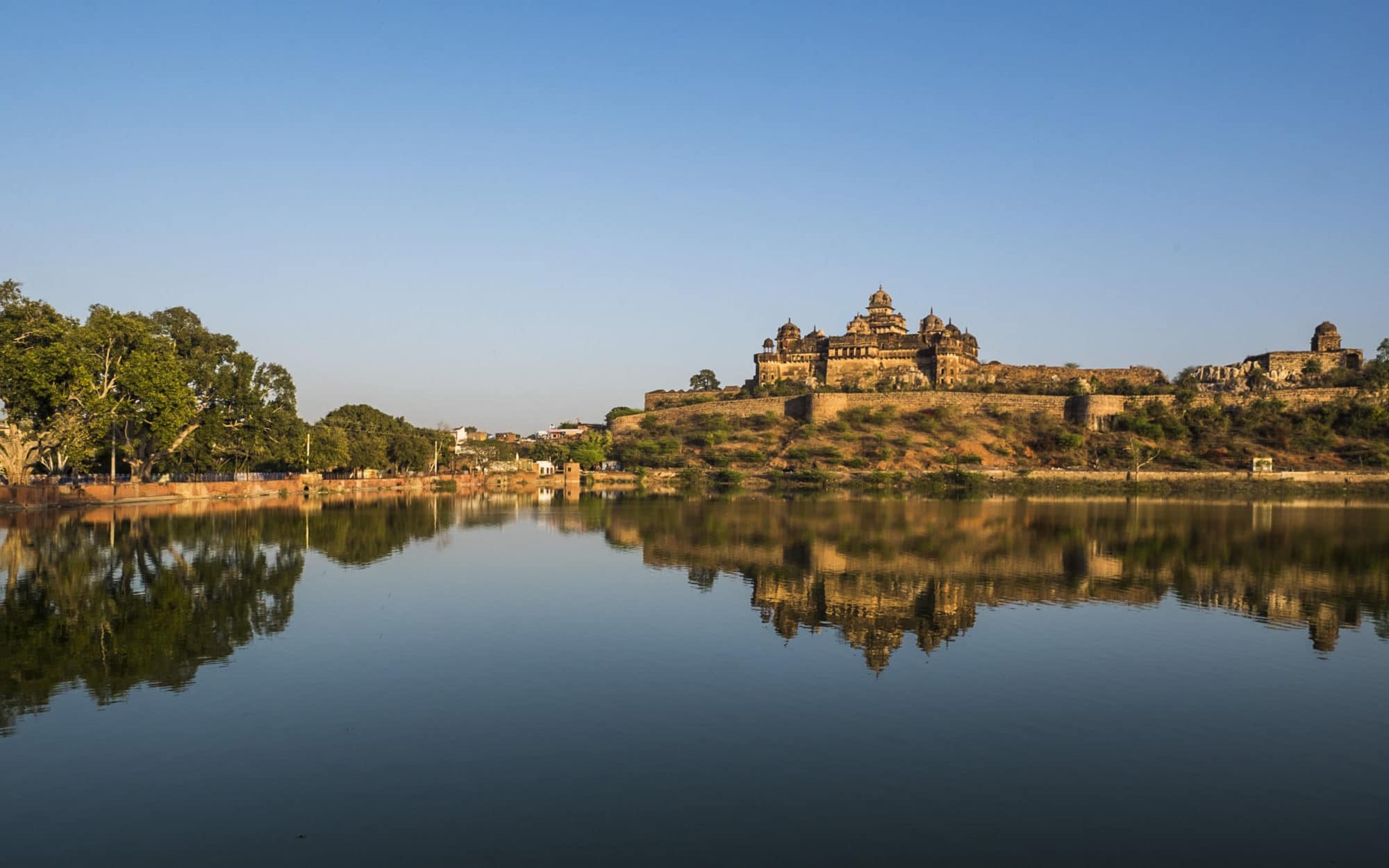It was only February but the days were already getting warm, making the tall glass of cool, sweet pomegranate juice I was greedily gulping down, all the more refreshing. We were in the market square of Orchha chatting with Deendayal, who runs a local guesthouse and sweet shop, about getting a taxi to Chanderi, which we had heard had many beautiful monuments besides the famous Chanderi Saris.
‘Chanderi you can do tomorrow’ declared Deendayal, deftly dodging a urinating cow, today you must do darshan at Ram Raja temple! Its the only Ram Raja temple in the world! We must have seemed sceptical, because Deendayal immediately launched into the story that is central to the way that Orchha, stuck somewhere between a village and a town, sees itself today.
In the late 1500s, Madhukar Shah, the Raja of Orchha and a devotee of Lord Krishna, went on a pilgrimage to Benares and Mathura. His Queen, Ganeshi bai, was a devotee of Lord Ram and after accompanying her King to Benares decided to conduct her own pilgrimage to Ayodhya. On reaching Ayodhya, Ganeshi bai decided to meditate by the banks of the river. She prayed and fasted for many days and nights but the lord refused to show himself, and in frustration the Queen was about to throw herself into the river when finally the child form of Rama appeared before her.
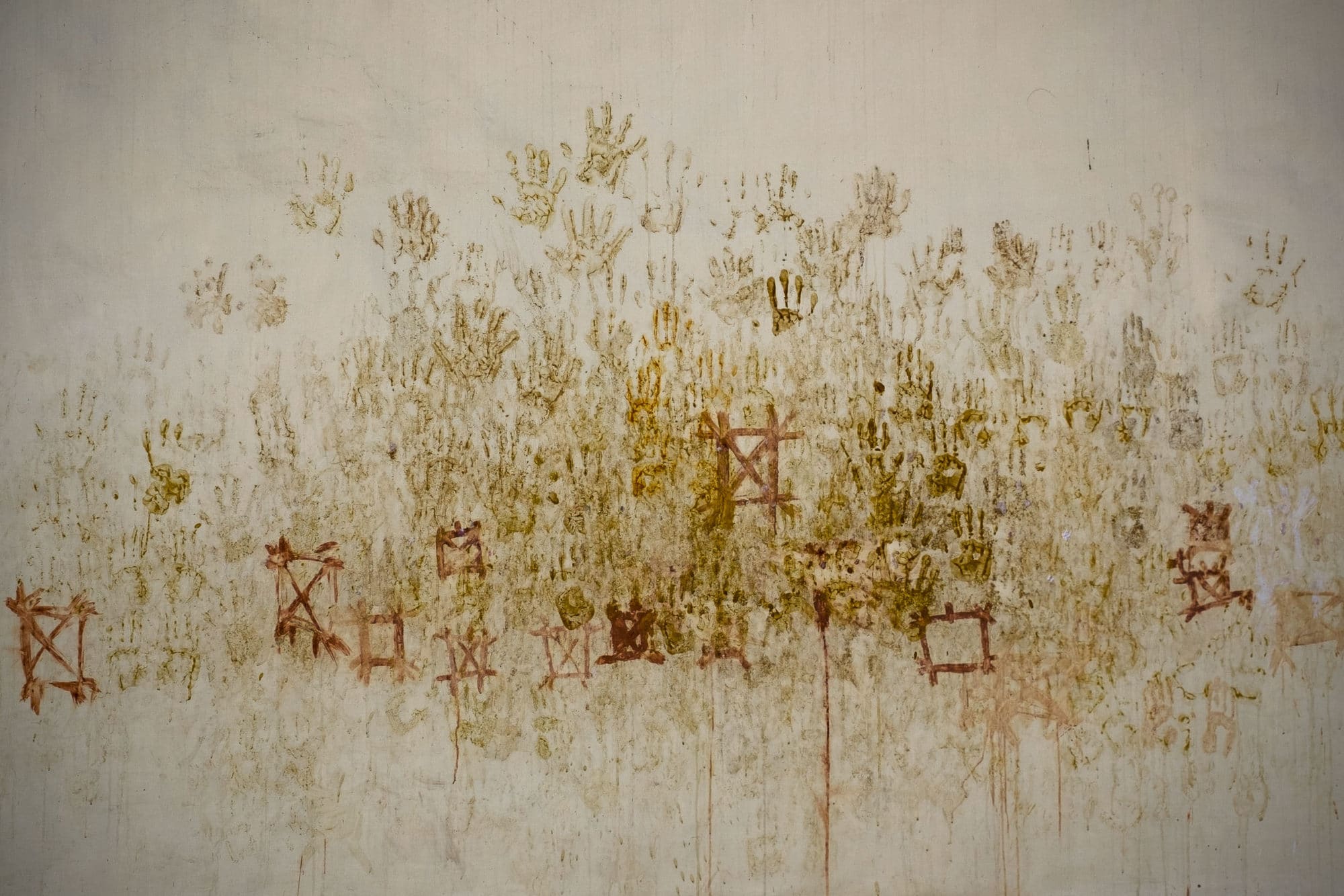
The Queen requested Rama to accompany her back to Orchha and after some thought Rama agreed, but on two conditions. Firstly he decreed that once they reached Orchha, wherever he first sits will be his final home and secondly he can be the only king. Ganeshi bai, overjoyed, agreed to his conditions. On reaching home the Queen ordered the construction of a massive temple for Lord Rama and in the interim requested him to stay in her palace. When the towering temple, rising close to 350 feet off the ground was finally ready, the Queen requested child Rama to move into his new home. Rama however reminded Ganeshi bai of his conditions. He would not move from his spot in her palace. This was his home. The Queen was distraught, but she had no choice. Her palace was now Lord Ramas and she left with due haste. Of course the second condition that he could be the only king of Orchha also came to pass as Madhukar Shah acknowledged the supremacy of Lord Rama and established his new capital at Tikamghar about 80 km to the south.
Today the former King of Orchha still has a summer palace outside the town, but it is Ram who is considered the Raja of Orchha. The Queen’s palace is now his temple, the Ram Raja temple, the only one of its kind in India where Ram is worshiped as a king and a daily guard of honour takes place. The actual temple, built by the Queen which Rama never occupied came to be a Vishnu Temple subsequently called the Chatarbhuj Temple. Whether you believe the story or not, it held our attention, and Deendayal satisfied that his retelling had hit its mark went back to squeezing the latest batch of jalebi batter into his large pan of sizzling oil.
We had reached Orchha from Gwalior on the overnight train and had initially planned to spend 2 – 3 days there, but Orchha is one of those places that encourages you to just .. be. We ended up spending six lovely days in Orchha exploring its unique Bundelkhandi architecture, soaking in the mix of hippie – spiritual vibe, chilling by the Betwa river and eating Indianised ‘pasta’ and excellent milk cake, which is the ‘prasad’ of choice at the temple and therefore every shop has a ton of it.
If you think Orchha is your typical temple town, think again. Established in the 1500s by Bundela Rajputs Chieftains, Orchha struggled through conflicts and alliances with the Afghans, Mughals, Marathas and eventually the British, but somewhere in the interim managed to build a city like none other in the region. Under the 300 odd year rule of the Bundelas, Orchha and the larger Bundelkhand region, spanning the border region of MP and UP, developed a unique architectural style, distinct from the Mughals, Rajput or the Indo-Saracenic styles, though drawing from all of them. This makes the entire experience of walking around the old town with its Forts, Palaces and Cenotaphs fairly surreal.
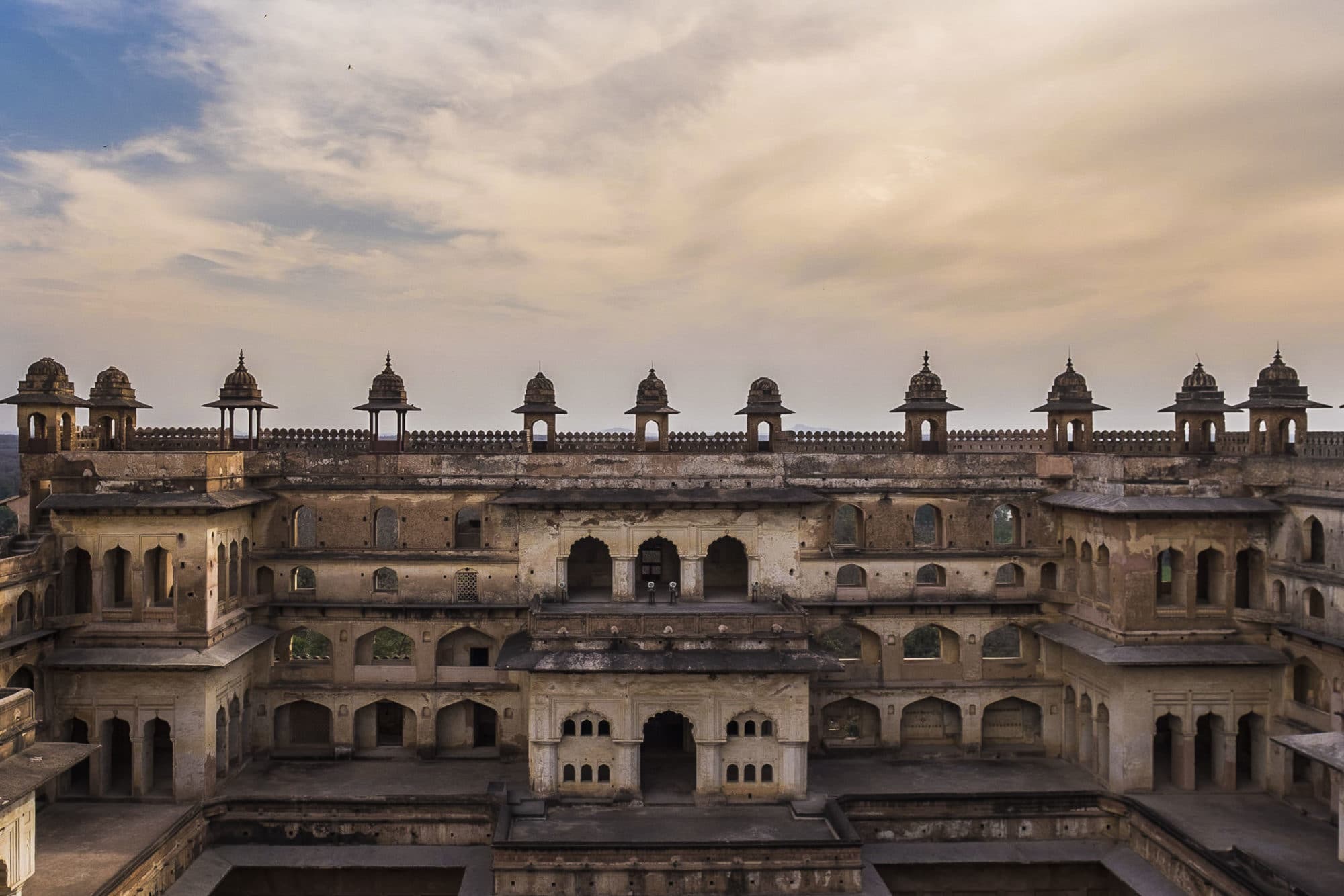
The Budelas built forts, palaces and temples through the region and they are nothing if not grand. The Raja Mahal of Orchha built by Madhukar Shah has a square block plan, rows upon rows of windows with the occasional projected balcony, topped with numerous small ‘chattris‘ and resembles neither the fort complexes of Gwalior nor the palaces of neighbouring Rajasthan. Whilst the outside is plain, the magnificent maze like interiors over many levels, hidden staircases and rooms adorned with wonderful murals take you back in time. We climbed 4 levels up to the highest vantage point where you one can see the imposing spires of the Chatarbhuj Temple to the west and the stunningly symmetrical Jehangir Mahal to the east. Walking along the narrow corridors with precariously low walls, one cannot help but wonder how many soldiers crashed to certain death in the moat below in the numerous battles that would have racked the fort as empires struggled for dominance over the region.
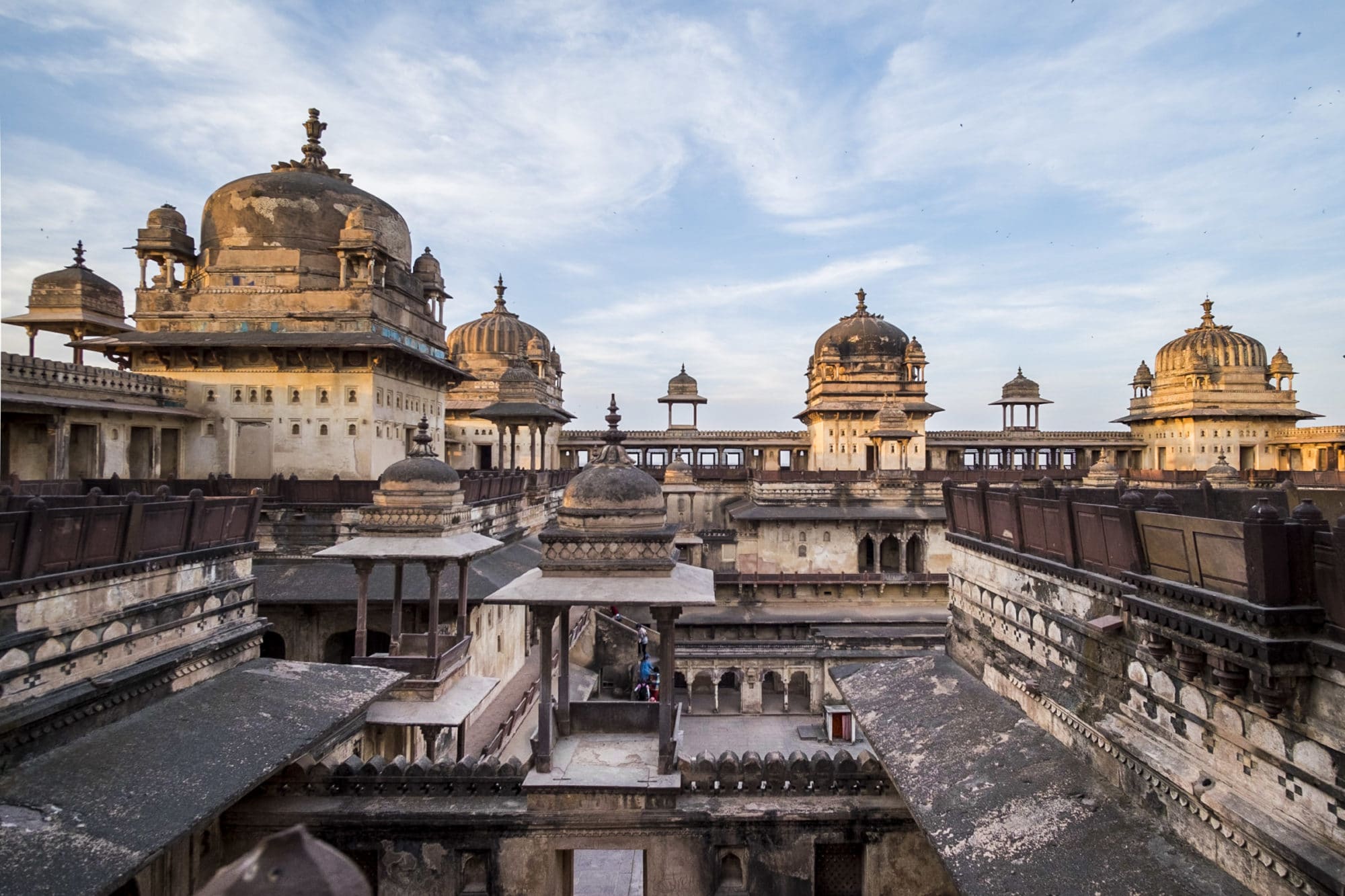
If the Usha Kiran Palace in Gwalior built for a night for King George VI seems ostentatious, it is not without precedent. Adjacent to the Raja Mahal stands one of the singularly most impressive palaces we have seen in India. In the late 1500s and early 1600s the Kings of Orchha were locked in a long conflict with Akbar, as he fought to establish his dominion over Central India. Simultaneously Akbar’s eldest son, Jehangir, was plotting a rebellion against him as he feared that he would be passed over as Emperor. An enemy’s enemy is a friend, and Vir Singh Deo, the most illustrious of the Orchha Maharajas decided to ally with Jehangir and help him by fighting the armies of Abul Fazl, Akbar’s Vizier who had been ordered to quell Jehangir’s rebellion. Vir Singh presented Jehangir with Abul Fazl’s head and in return, when Jehangir ascended the Mughal throne a few years later, he established Vir Singh as the ruler of the region and thus began the most prosperous phase in Orchha’s fascinating history.
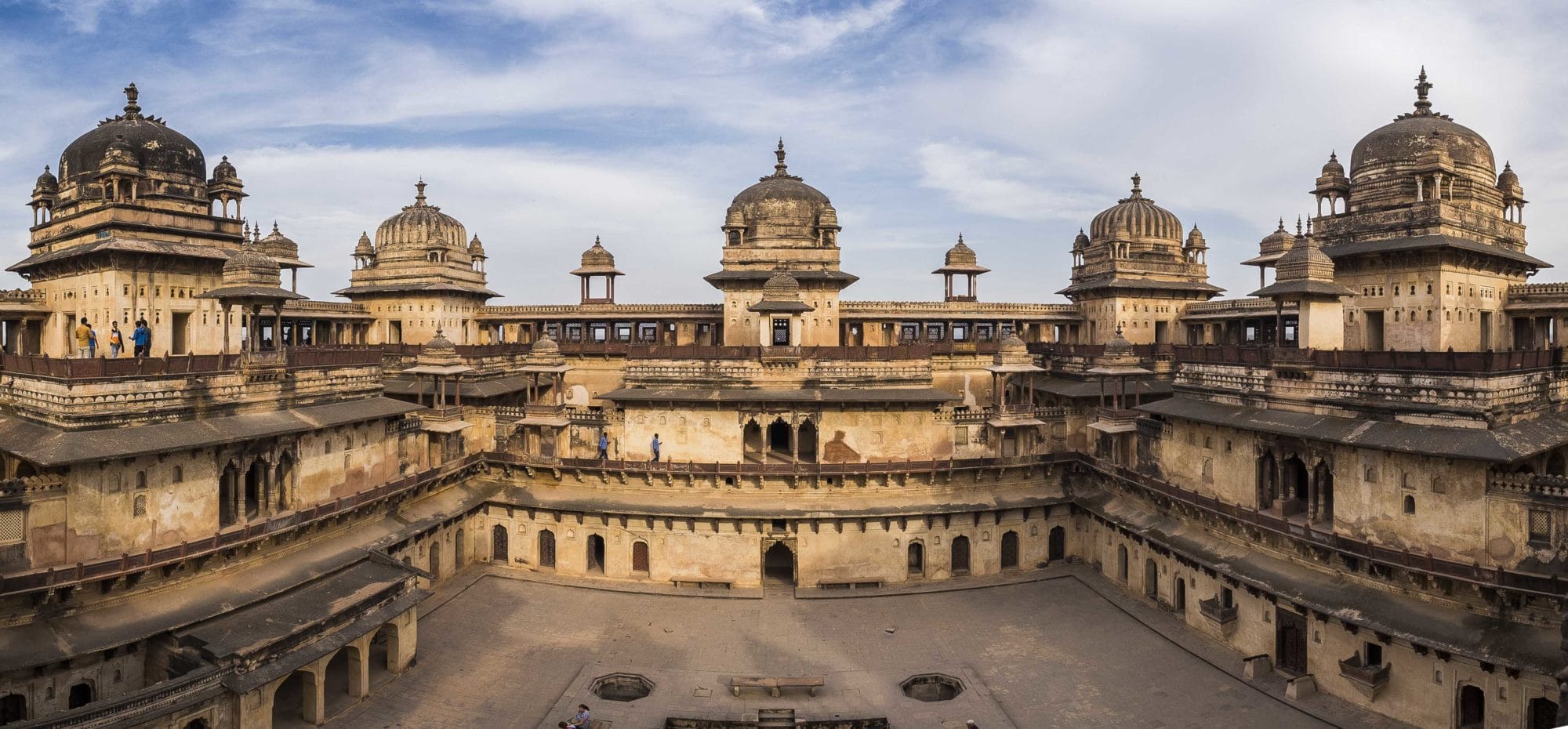
Jehangir Mahal was thus built by Vir Singh as a gift to Jehangir when the Emperor visited Orchha. The beautiful palace built in red and yellow sandstone uses Islamic and Hindu architectural elements like domes, chhatris, floral motifs and elephants to create a unique and beautiful structure as a nod to the friendship between the two men and their religions. The beauty of the palace, with its symmetry and graceful blend of elements is stunning to behold especially in the evenings when the smooth red sandstone glows in the light of the setting sun and the Betwa flows serenely in the distance. One hopes that Jehangir appreciated the gesture, considering it was a palace with 120 rooms, built for him, in which he spent just one night.
Orchha is most beautiful in the evening when the soft light of the setting sun lights up its many monuments and for one of the nicest views of the place we went up to Ganj, a village at an elevation a couple of kilometres outside. The village is located a little bit beyond the Laxmi Temple, yet another testament to the prolific vision and aesthetic sense of Vir Singh Deo. The temple is built on a square plan with a central dome, with smaller domes in four corners, much like the forts and palaces. The temple is uniquely proportioned and the standout part is the lovely murals on the roof and corridors. Hundreds of years old, some of the murals have fallen into a state of disrepair but others are fairly well preserved with original colour and detail. The images portrayed of gods and goddesses, battle scenes from the Ramayana and Mahabharata and the clashes between gods and demons are grand, and despite the passage of time the natural dyes still hold their deep and rich colour.
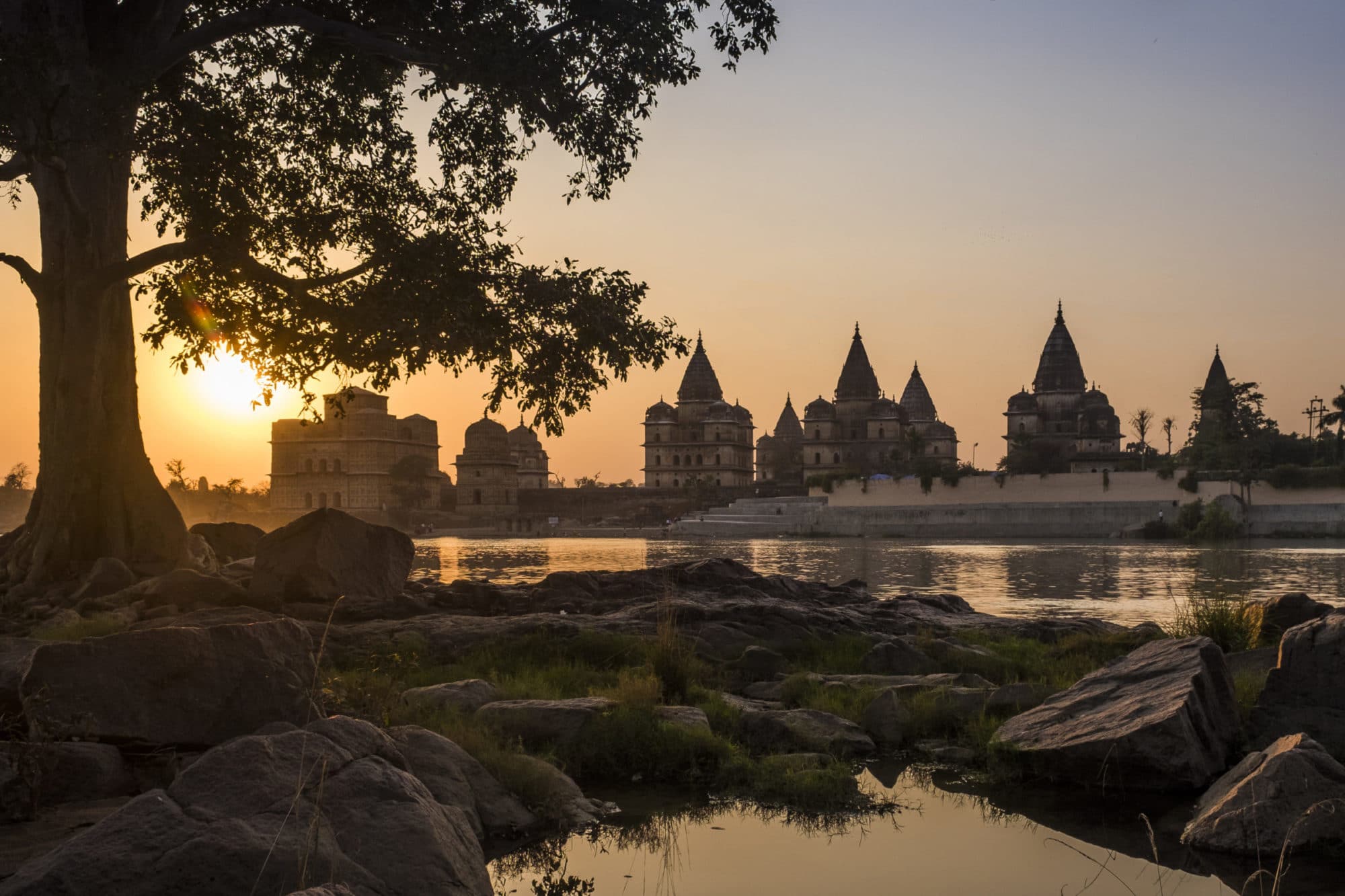
We continued on our way to Ganj where a local NGO works with the villagers on skill building, sanitation, and helping them supplement their income by offering a room in their home. We met some of the villagers there along with Romi, the manager, and learnt that the initiatives taken not only help the families economically, but also gives them a sense of confidence and self worth. In India where caste equations still hold sway it is extremely empowering for villagers from traditionally backward areas to realise that in the outside world there are people who are more than happy to live in their homes and eat the food they cook.
Our little tour of Ganj completed we made our way up to the low hill behind the village where sections of the fort walls still exist and sat down to watch the sun set over the babbling Betwa, the scene punctuated by domes and spires of Orchha, making it seem like a scene out of a fairytale.
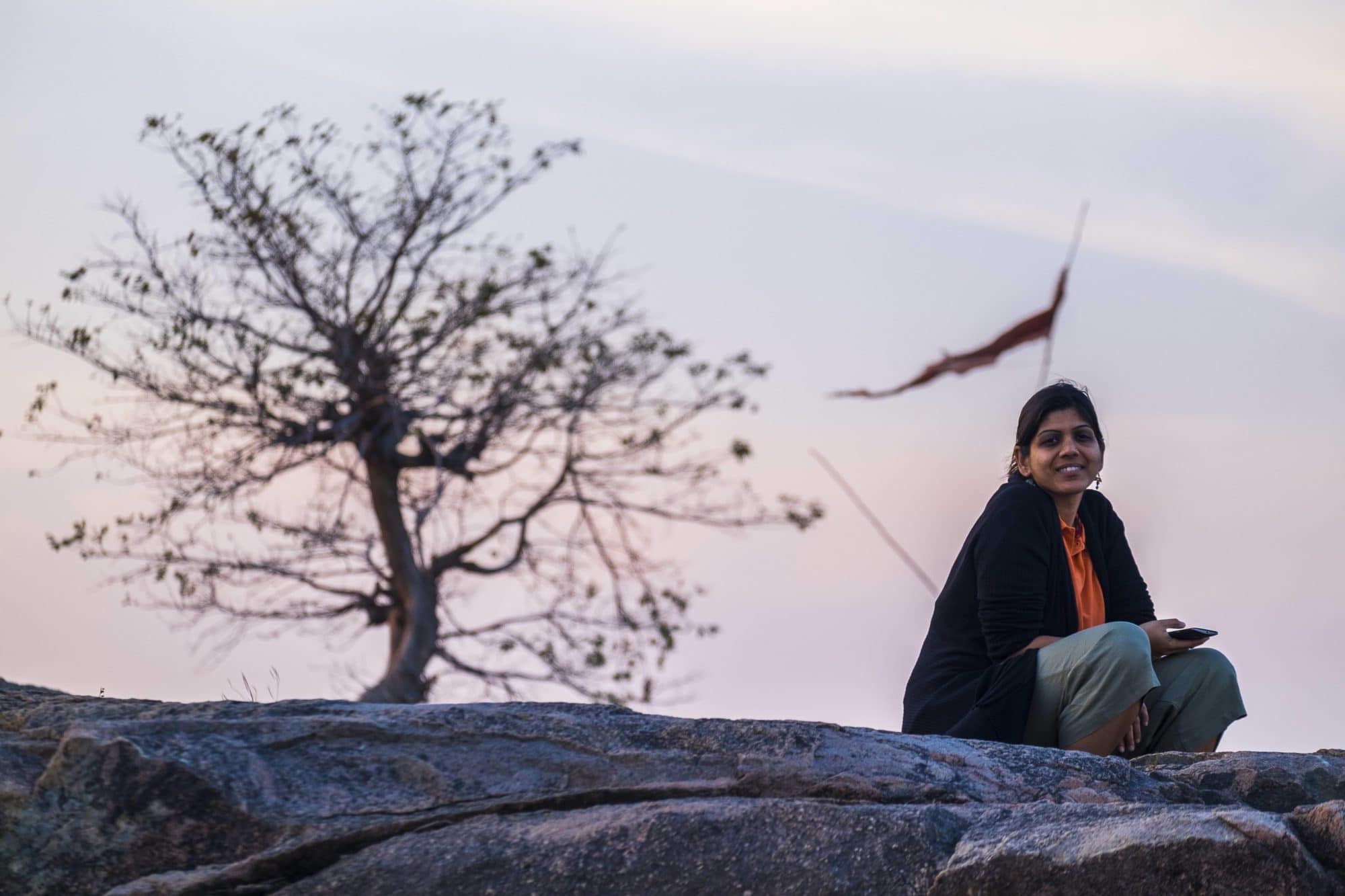
Some Useful Information:
How to get there: Orchha is located a 170 kms from Khajuraho and a 120kms from Gwalior and can be easily accessed from both places by road or train. The closest major rail head is Jhansi which is approximately 18 kms from Orchha and the closest airport is Gwalior.
Where to Stay: There are many options in Orchha to match a range of budgets including a number of luxury heritage places like the Bundelkhand Riverside and the Amar Mahal. For budget options you can’t do better than the clean, cheap and friendly Temple View Guesthouse, located bang in the middle of the town for a ridiculous Rs 400/- ! You can also stay at Ganj with the local NGO, Friends of Orchha who run homestays along with the villagers of Ganj. An excellent option if you are looking for a real village experience in a quiet setting. Rooms start at Rs 800/- But if you want to stay in a real Palace, look no further than the Sheesh Mahal, run by MPTDC which is located within the Fort complex and gives you the unique experience of staying with the Raja Mahal on your right and the Jehangir Mahal to your left! At Rs. 5000/- for a room it is excellent value for the location, though the food and service could be better.
Dont Miss: Take a day trip down to Datia, less than 50 kms away, where amongst other temples and forts stands the seven storey high Datia Palace, another magnificent Bundela Palace built by Vir Singh Deo, where no one ever lived.
